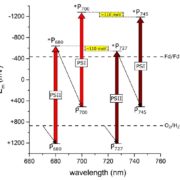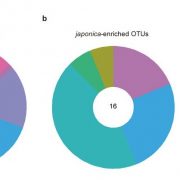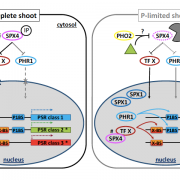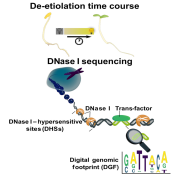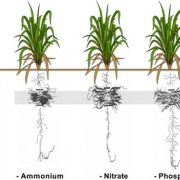Phosphorous Deficiency and Photosynthesis
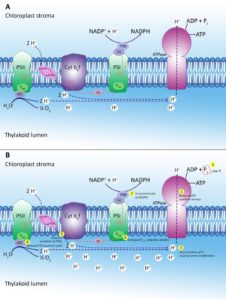 Phosphorus (P) is an essential macronutrient, and P deficiency limits plant productivity. P influences many aspects of photosynthesis P-deficient plants typically remain green and do not develop leaf chlorosis and yet P starvation immediately affects CO2 assimilation. Specifically, P deficiency is believed to affect CO2 assimilation by reducing the ATP-dependent regeneration of ribulose-1,5- bisphosphate in the Calvin cycle. Recent research, however, has also revealed that P deficiency affects electron transport to photosystem I (PSI). In this issue, Carstensen et al. (10.1104/pp.17.01624) present a comprehensive biological model describing how P deficiency disrupts the photosynthetic machinery and the electron transport chain in barley (Hordeum vulgare). They report that P deficiency reduces the orthophosphate concentration in the chloroplast stroma to levels that inhibit ATP synthase activity. Under P deficiency, the enhanced electron flow through PSI increases the levels of NADPH, whereas ATP production remains restricted and, hence, reduces CO2 fixation. In parallel, lumen acidification activates the energy-dependent quenching component of the nonphotochemical quenching mechanism and prevents the overexcitation of photosystem II and damage to the leaf tissue. Consequently, plants can be severely affected by P deficiency for weeks without displaying any visual leaf symptoms. All of the processes in the photosynthetic machinery influenced by P deficiency appear to be fully reversible and can be restored in less than 1 h after resupply of P to the leaf tissue.
Phosphorus (P) is an essential macronutrient, and P deficiency limits plant productivity. P influences many aspects of photosynthesis P-deficient plants typically remain green and do not develop leaf chlorosis and yet P starvation immediately affects CO2 assimilation. Specifically, P deficiency is believed to affect CO2 assimilation by reducing the ATP-dependent regeneration of ribulose-1,5- bisphosphate in the Calvin cycle. Recent research, however, has also revealed that P deficiency affects electron transport to photosystem I (PSI). In this issue, Carstensen et al. (10.1104/pp.17.01624) present a comprehensive biological model describing how P deficiency disrupts the photosynthetic machinery and the electron transport chain in barley (Hordeum vulgare). They report that P deficiency reduces the orthophosphate concentration in the chloroplast stroma to levels that inhibit ATP synthase activity. Under P deficiency, the enhanced electron flow through PSI increases the levels of NADPH, whereas ATP production remains restricted and, hence, reduces CO2 fixation. In parallel, lumen acidification activates the energy-dependent quenching component of the nonphotochemical quenching mechanism and prevents the overexcitation of photosystem II and damage to the leaf tissue. Consequently, plants can be severely affected by P deficiency for weeks without displaying any visual leaf symptoms. All of the processes in the photosynthetic machinery influenced by P deficiency appear to be fully reversible and can be restored in less than 1 h after resupply of P to the leaf tissue.


